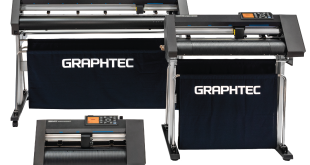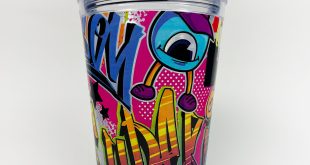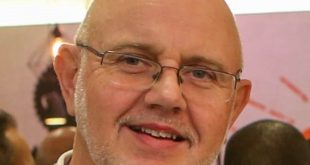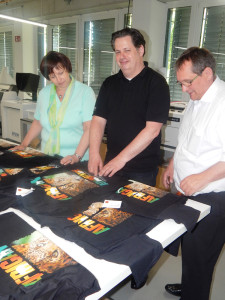
Epson invited German magazine TVP to visit the Epson Training and Solutions Centre in Düsseldorf to see the SureColor SC-F2000 direct to garment printer in action. BIRGIT JUSSEN reports.
According to Epson, the first small format printer in the world was developed by the Japanese watchmakers Seiko, nearly 50 years ago in 1968. The invention at that time, branded EP 101, led to the formation of a Seiko subsidiary company called Epson, which became the name for Epson products. In fact, the abbreviation EP 101 meant ‘electronic printer 101 version’ and its subsequent products were termed the ‘sons’ and thus the name Epson was born.
Thereafter, the Epson Company, which was primarily occupied with paper printing equipment, developed further and opened up new market sectors.
The company’s corporate philosophy is to provide customers everything from the same supplier. Epson works with clients across the world to create total solutions that cover all aspects of a business, from planning and design implementation, maintenance and ongoing support.
Print head, toner and the housing are all developed by Epson and manufactured by the company, no matter what needs printing. And the same is true for garment printing.
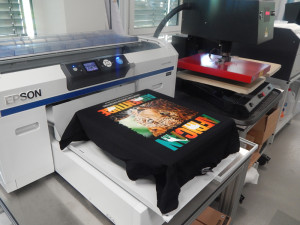
Taking over
Epson proceeded to take over the garment print market more and more. Firstly in 2012, Epson entered the dye sublimation sector. At FESPA 2015, Epson launched its new SureColor SC F9200 dye sublimation printer as well as its new DS Transfer Multipurpose Paper.
In 2013, Epson took up the digital direct to garment print challenge. Epson had become aware that customised and personalised textile prints and large surface patterns could be creatively produced cost-effectively. At Viscom in Düsseldorf, Epson introduced its first digital direct to garment printer – the SureColor SC-F2000, which uses certified CMYK and white inks, meeting the Oeko-Tex Standard 100.
Epson suggests one reason for its success could be due to its technology development in the Epson Training and Demo Centre at Meerbusch-Osterath near Düsseldorf, Germany. The Epson Industry Solutions Centre (EISC) was established in 2008. Epson also has a similar facility at Westside, Hemel Hempstead. At the German facility, over an area of 500sq m, customers and other parties can carry out print trials together. The amalgamation of the Epson technology together with customer know-how represents good business for Epson. New market outlets can be developed by working together on practical examples with tailor-made solutions found for and with industrial customers.
The textile department also includes SureColor SC-F2000 direct to garment equipment. TVP accepted an invitation to visit the workshop.
Increasing popularity
On the day of the visit, Elke Bobek from Promodoro Fashion was there. Ms Bobek was taking advantage of an offer to finish development-stage garments, as well as current products from Promodoro’s collection, and those of competitors, with the Epson Digital Direct Print Technique.
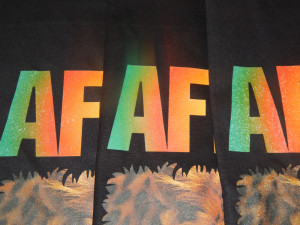
Ms Bobek, explained: “We have to react to the increasing popularity of digital print and to the possibilities provided by this technology, and try to always be at the cutting edge of technological developments.
“Thus, we are pleased to collaborate with printer manufacturers. The finishing possibilities for promotional textiles are varied and the techniques – even between the digital print machinery manufacturers – are extremely different. The more we can learn about the behaviour of various products when printed, the better.
“The Epson EISC provides us with an excellent facility for this purpose.”
Reproducible, controllable quality is therefore indispensable. In theory, the required result should be possible to attain with the standard settings. That this is not always possible with each textile fabric is rapidly clear. In total six different fabric surfaces were printed during the visit: all T shirts were of 100% cotton and of the same weight, and yet the results were very different. Again, it was clear that the combination of textile surface and printing system had to be just right. That requires a lot of know-how with respect to the advanced printing technology as well as on the nature of the textile.
This opportunity of being able to run through production together with the Epson technicians and develop corresponding problem solutions is extremely helpful for all concerned. The experience obtained through these trials can be employed for the onward development of the print technique and the textiles. The knowledge can be passed on to textile manufacturers as well as Epson which in turn benefits the customer; a win-win situation.
This was also true for the TVP editorial staff, who can look back on an interesting day at Epson. Not only did they have the opportunity to print textiles using the Epson technology, but they also learnt a lot. Who knew that digital printing was developed by a watchmaker?
 Printwear & Promotion The Total Promotional Package
Printwear & Promotion The Total Promotional Package
